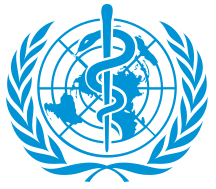
Noncommunicable diseases and air pollution: WHO European high-level conference on noncommunicable diseases: time to deliver – meeting NCD targets to achieve Sustainable Development Goals in Europe: 9–10 April 2019, Ashgabat, Turkmenistan / World Health Organization. Regional Office for Europe
Tác giả : World Health Organization. Regional Office for Europe
Nhà xuất bản : World Health Organization. Regional Office for Europe
Năm xuất bản : 2019
Chủ đề : 1. Air Pollution. 2. Lung Neoplasms. 3. Myocardial Ischemia. 4. Noncommunicable Diseases. 5. Preventive Health Services. 6. Pulmonary Disease, Chronic Obstructive. 7. Stroke. 8. Technical documents.
Thông tin chi tiết
| Tóm tắt : | 7 p. Air pollution is the second leading cause of deaths from noncommunicable diseases (NCDs), after tobacco-smoking. In 2018, the third United Nations high-level meeting on NCDs recognized household and outdoor air pollution as a risk factor for NCDs, alongside unhealthy diets, tobacco-smoking, harmful use of alcohol and physical inactivity.More than 550 000 deaths in the WHO European Region in 2016 were attributable to the joint effects of household and ambient air pollution. The main NCDs associated with air pollution include ischaemic heart disease, stroke, chronic obstructive pulmonary disease and lung cancer. Substantial epidemiological evidence links air pollution with diverse health outcomes, with extensive research conducted to advance understanding of the underlying mechanistic pathways.Among the complex mixture of air pollutants, particulate matter is of prime public health concern. Interventions to reduce exposure to air pollution and improve air quality have huge potential in protecting health and contributing to reducing the burden of NCDs. Creating healthier environments for reducing NCDs can result in multiple co-benefits for health, climate change and the environment. |
Thông tin dữ liệu nguồn
| Thư viện | Ký hiệu xếp giá | Dữ liệu nguồn |
|---|---|---|
 Tổ chức y tế thế giới
Tổ chức y tế thế giới
|
|
https://iris.who.int/handle/10665/346416 |
 Tài liệu điện tử
Tài liệu điện tử 





 Đại học Công nghệ - ĐHQGHN
Đại học Công nghệ - ĐHQGHN  Đại học Giáo dục - ĐHQGHN
Đại học Giáo dục - ĐHQGHN  Đại học khoa học tự nhiên - ĐHQGHN
Đại học khoa học tự nhiên - ĐHQGHN  Đại học Khoa học Xã hội và Nhân văn - ĐHQGHN
Đại học Khoa học Xã hội và Nhân văn - ĐHQGHN  Đại học Kinh tế - ĐHQGHN
Đại học Kinh tế - ĐHQGHN  Đại học Ngoại ngữ - ĐHQGHN
Đại học Ngoại ngữ - ĐHQGHN  Đại học quốc gia Hà Nội
Đại học quốc gia Hà Nội  Đại học Y - Dược - ĐHQGHN
Đại học Y - Dược - ĐHQGHN  Học Viện Hàng Không Việt Nam
Học Viện Hàng Không Việt Nam  Thư viện đại học Cần Thơ
Thư viện đại học Cần Thơ  Thư viện Huyện Bình Chánh - TVKHTH TP.HCM
Thư viện Huyện Bình Chánh - TVKHTH TP.HCM  Thư viện huyện Bình Minh - TV Vĩnh Long
Thư viện huyện Bình Minh - TV Vĩnh Long  Thư viện huyện Bình Tân - TV Vĩnh Long
Thư viện huyện Bình Tân - TV Vĩnh Long  Thư viện Huyện Cần Giờ - TVKHTH TP.HCM
Thư viện Huyện Cần Giờ - TVKHTH TP.HCM  Thư viện Huyện Củ Chi - TVKHTH TP.HCM
Thư viện Huyện Củ Chi - TVKHTH TP.HCM  Thư viện Huyện Hóc Môn - TVKHTH TP.HCM
Thư viện Huyện Hóc Môn - TVKHTH TP.HCM  Thư viện huyện Long Hồ - TV Vĩnh Long
Thư viện huyện Long Hồ - TV Vĩnh Long  Thư viện huyện Mang Thít - TV Vĩnh Long
Thư viện huyện Mang Thít - TV Vĩnh Long  Thư viện Huyện Nhà Bè - TVKHTH TP.HCM
Thư viện Huyện Nhà Bè - TVKHTH TP.HCM  Thư viện huyện Tam Bình - TV Vĩnh Long
Thư viện huyện Tam Bình - TV Vĩnh Long  Thư viện huyện Trà Ôn - TV Vĩnh Long
Thư viện huyện Trà Ôn - TV Vĩnh Long  Thư viện Khoa học Tổng hợp TP.HCM
Thư viện Khoa học Tổng hợp TP.HCM  Thư viện quận 1 - TVKHTH TP.HCM
Thư viện quận 1 - TVKHTH TP.HCM  Thư viện quận 10 - TVKHTH TP.HCM
Thư viện quận 10 - TVKHTH TP.HCM  Thư viện quận 11 - TVKHTH TP.HCM
Thư viện quận 11 - TVKHTH TP.HCM  Thư viện quận 12 - TVKHTH TP.HCM
Thư viện quận 12 - TVKHTH TP.HCM  Thư viện quận 2 - TVKHTH TP.HCM
Thư viện quận 2 - TVKHTH TP.HCM  Thư viện quận 3 - TVKHTH TP.HCM
Thư viện quận 3 - TVKHTH TP.HCM  Thư viện quận 4 - TVKHTH TP.HCM
Thư viện quận 4 - TVKHTH TP.HCM  Thư viện quận 5 - TVKHTH TP.HCM
Thư viện quận 5 - TVKHTH TP.HCM  Thư viện quận 6 - TVKHTH TP.HCM
Thư viện quận 6 - TVKHTH TP.HCM  Thư viện quận 7 - TVKHTH TP.HCM
Thư viện quận 7 - TVKHTH TP.HCM  Thư viện quận 8 - TVKHTH TP.HCM
Thư viện quận 8 - TVKHTH TP.HCM  Thư viện quận Bình Tân - TVKHTH TP.HCM
Thư viện quận Bình Tân - TVKHTH TP.HCM  Thư viện quận Bình Thạnh - TVKHTH TP.HCM
Thư viện quận Bình Thạnh - TVKHTH TP.HCM  Thư viện quận Gò Vấp - TVKHTH TP.HCM
Thư viện quận Gò Vấp - TVKHTH TP.HCM  Thư viện quận Phú Nhuận - TVKHTH TP.HCM
Thư viện quận Phú Nhuận - TVKHTH TP.HCM  Thư viện quận Tân Bình - TVKHTH TP.HCM
Thư viện quận Tân Bình - TVKHTH TP.HCM  Thư viện quận Tân Phú - TVKHTH TP.HCM
Thư viện quận Tân Phú - TVKHTH TP.HCM  Thư viện Quốc gia Việt Nam
Thư viện Quốc gia Việt Nam  Thư viện thành phố Thủ Đức (cơ sở 1) - TVKHTH TP.HCM
Thư viện thành phố Thủ Đức (cơ sở 1) - TVKHTH TP.HCM  Thư viện thành phố Thủ Đức (cơ sở 2) - TVKHTH TP.HCM
Thư viện thành phố Thủ Đức (cơ sở 2) - TVKHTH TP.HCM  Thư Viện Tỉnh An Giang
Thư Viện Tỉnh An Giang  Thư viện tỉnh Vĩnh Long
Thư viện tỉnh Vĩnh Long  Trung tâm giáo dục quốc phòng và An ninh - ĐHQGHN
Trung tâm giáo dục quốc phòng và An ninh - ĐHQGHN  Trung tâm Hỗ trợ Sinh viên - ĐHQGHN
Trung tâm Hỗ trợ Sinh viên - ĐHQGHN  Trường Đại học Luật - ĐHQGHN
Trường Đại học Luật - ĐHQGHN  Trường Khoa học liên ngành và nghệ thuật - ĐHQGHN
Trường Khoa học liên ngành và nghệ thuật - ĐHQGHN  Trường Quản trị và Kinh doanh - ĐHQGHN
Trường Quản trị và Kinh doanh - ĐHQGHN  Viện Công nghệ Thông tin - ĐHQGHN
Viện Công nghệ Thông tin - ĐHQGHN  Viện Đảm bảo chất lượng giáo dục - ĐHQGHN
Viện Đảm bảo chất lượng giáo dục - ĐHQGHN  Viện Quốc tế Pháp ngữ - ĐHQGHN
Viện Quốc tế Pháp ngữ - ĐHQGHN  Viện Tài nguyên và Môi trường - ĐHQGHN
Viện Tài nguyên và Môi trường - ĐHQGHN  Viện Vi sinh vật và Công nghệ Sinh học - ĐHQGHN
Viện Vi sinh vật và Công nghệ Sinh học - ĐHQGHN  Viện Việt Nam học và Khoa học phát triển - ĐHQGHN
Viện Việt Nam học và Khoa học phát triển - ĐHQGHN